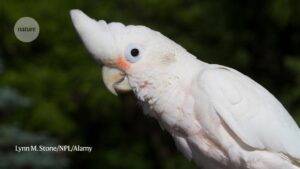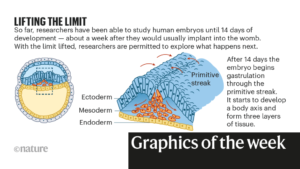The polar oxy-metabolome reveals the 4-hydroxymandelate CoQ10 synthesis pathway – Nature
Morgan, N. V. et al. Evidence that autosomal recessive spastic cerebral palsy-1 (CPSQ1) is brought on by a missense variant in HPDL. Brain Commun. 3, fcab002 (2021).
Husain, R. A. et al. Bi-allelic HPDL variants trigger a neurodegenerative illness starting from neonatal encephalopathy to adolescent-onset spastic paraplegia. Am. J. Hum. Genet. 107, 364–373 (2020).
Ghosh, S. G. et al. Biallelic variants in HPDL, encoding 4-hydroxyphenylpyruvate dioxygenase-like protein, result in an childish neurodegenerative situation. Genet. Med. 23, 524–533 (2021).
Wiessner, M. et al. Biallelic variants in HPDL trigger pure and sophisticated hereditary spastic paraplegia. Brain 144, 1422–1434 (2021).
Ye, X. et al. 4-hydroxyphenylpyruvate dioxygenase-like protein promotes pancreatic most cancers cell development and is related to glutamine-mediated redox stability. Front. Oncol. 10, 3074 (2021).
Tang, D., Kang, R., Berghe, T. V., Vandenabeele, P. & Kroemer, G. The molecular equipment of regulated cell loss of life. Cell Res. 29, 347–364 (2019).
Hirsila, M., Koivunen, P., Gunzler, V., Kivirikko, Okay. I. & Myllyharju, J. Characterization of the human prolyl 4-hydroxylases that modify the hypoxia-inducible issue. J. Biol. Chem. 278, 30772–30780 (2003).
Masson, N. et al. Conserved N-terminal cysteine dioxygenases transduce responses to hypoxia in animals and vegetation. Science 365, 65–69 (2019).
Laukka, T. et al. Fumarate and succinate regulate expression of hypoxia-inducible genes through TET enzymes. J. Biol. Chem. 291, 4256–4265 (2016).
Moran, G. R. 4-Hydroxyphenylpyruvate dioxygenase. Arch. Biochem. Biophys. 433, 117–128 (2005).
Ast, T. & Mootha, V. Okay. Oxygen and mammalian cell tradition: are we repeating the experiment of Dr. Ox? Nature Metabolism 1, 858–860 (2019).
Deshpande, A. R., Wagenpfeil, Okay., Pochapsky, T. C., Petsko, G. A. & Ringe, D. Metal-dependent operate of a mammalian acireductone dioxygenase. Biochemistry 55, 1398–1407 (2016).
Drazic, A. & Winter, J. The physiological function of reversible methionine oxidation. Biochim. Biophys. Acta 1844, 1367–1382 (2014).
Choroba, O. W., Williams, D. H. & Spencer, J. B. Biosynthesis of the vancomycin group of antibiotics: involvement of an uncommon dioxygenase in the pathway to (S)-4-hydroxyphenylglycine. JACS 122, 5389–5390 (2000).
Hubbard, B. Okay., Thomas, M. G. & Walsh, C. T. Biosynthesis of l–p-hydroxyphenylglycine, a non-proteinogenic amino acid constituent of peptide antibiotics. Chem. Biol. 7, 931–942 (2000).
Lemberger, L., Klutch, A. & Kuntzman, R. The metabolism of tyramine in rabbits. J. Pharmacol. Exp. Ther. 153, 183 (1966).
Lichter-Konecki, U., Hipke, C. M. & Konecki, D. S. Human phenylalanine hydroxylase gene expression in kidney and different nonhepatic tissues. Mol. Genet. Metab. 67, 308–316 (1999).
Gunsior, M., Ravel, J., Challis, G. L. & Townsend, C. A. Engineering p-hydroxyphenylpyruvate dioxygenase to a p-hydroxymandelate synthase and proof for the proposed benzene oxide intermediate in homogentisate formation. Biochemistry 43, 663–674 (2004).
O’Hare, H. M., Huang, F., Holding, A., Choroba, O. W. & Spencer, J. B. Conversion of hydroxyphenylpyruvate dioxygenases into hydroxymandelate synthases by directed evolution. FEBS Lett. 580, 3445–3450 (2006).
Gunsior, M. et al. The biosynthetic gene cluster for a monocyclic β-lactam antibiotic, nocardicin A. Chem. Biol. 11, 927–938 (2004).
Bhat, S. G. & Vaidyanathan, C. S. Involvement of 4-hydroxymandelic acid in the degradation of mandelic acid by Pseudomonas convexa. J. Bacteriol. 127, 1108–1118 (1976).
Stefely, J. A. & Pagliarini, D. J. Biochemistry of mitochondrial coenzyme Q biosynthesis. Trends Biochem. Sci. 42, 824–843 (2017).
Lu, T.-T., Lee, S. J., Apfel, U.-P. & Lippard, S. J. Aging-associated enzyme human clock-1: substrate-mediated discount of the diiron middle for five-demethoxyubiquinone hydroxylation. Biochemistry 52, 2236–2244 (2013).
Wang, Y. et al. The anti-neurodegeneration drug clioquinol inhibits the getting older-related protein CLK-1. J. Biol. Chem. 284, 314–323 (2009).
Payet, L.-A. et al. Mechanistic particulars of early steps in coenzyme Q biosynthesis pathway in yeast. Cell Chem. Biol. 23, 1241–1250 (2016).
Stefely, J. A. et al. Mitochondrial protein features elucidated by multi-omic mass spectrometry profiling. Nat. Biotechnol. 34, 1191–1197 (2016).
Valera, M. J. et al. The mandelate pathway, a substitute for the phenylalanine ammonia lyase pathway for the synthesis of benzenoids in ascomycete yeasts. Appl. Environ. Microbiol. 86, e00701–20 (2020).
Kaymak, I. et al. Mevalonate pathway gives ubiquinone to keep up pyrimidine synthesis and survival in p53-deficient most cancers cells uncovered to metabolic stress. Cancer Res. 80, 189–203 (2020).
Kapalczynska, M. et al. 2D and 3D cell cultures – a comparability of several types of most cancers cell cultures. Arch. Med. Sci. 14, 910–919 (2018).
Doimo, M. et al. Genetics of coenzyme q10 deficiency. Mol. Syndromol. 5, 156–162 (2014).
Martínez-Reyes, I. et al. Mitochondrial ubiquinol oxidation is important for tumour development. Nature 585, 288–292 (2020).
Xie, L. X. et al. Resveratrol and para-coumarate function ring precursors for coenzyme Q biosynthesis. J. Lipid Res. 56, 909–919 (2015).
Fernández-del-Río, L. et al. Kaempferol will increase ranges of coenzyme Q in kidney cells and serves as a biosynthetic ring precursor. Free Radical Biol. Med. 110, 176–187 (2017).
Booth, A. N. et al. Urinary phenolic acid metabolites of tyrosine. J. Biol. Chem. 235, 2649–2652 (1960).
Hartl, J., Kiefer, P., Meyer, F. & Vorholt, J. A. Longevity of main coenzymes permits minimal de novo synthesis in microorganisms. Nat Microbiol 2, 17073 (2017).
Meyers, R. M. et al. Computational correction of copy quantity impact improves specificity of CRISPRCas9 essentiality screens in most cancers cells. Nat. Genet. 49, 1779–1784 (2017).
Uphoff, C. C. & Drexler, H. G. Detecting mycoplasma contamination in cell cultures by polymerase chain response. Methods Mol. Biol. 731, 93–103 (2011).
Parker, S. J. et al. LKB1 promotes metabolic flexibility in response to vitality stress. Metab. Eng. 43, 208–217 (2017).
Wenig, P. & Odermatt, J. OpenChrom: a cross-platform open supply software program for the mass spectrometric evaluation of chromatographic information. BMC Bioinf. 11, 405 (2010).
Fernandez, C. A., Des Rosiers, C., Previs, S. F., David, F. & Brunengraber, H. Correction of 13C mass isotopomer distributions for pure secure isotope abundance. J. Mass Spectrom. 31, 255–262 (1996).
Gao, J. et al. Integrative evaluation of advanced most cancers genomics and scientific profiles utilizing the cBioPortal. Sci Signal. 6, pl1 (2013).
Cerami, E. et al. The cBio most cancers genomics portal: an open platform for exploring multidimensional most cancers genomics information. Cancer Discov. 2, 401–404 (2012).



